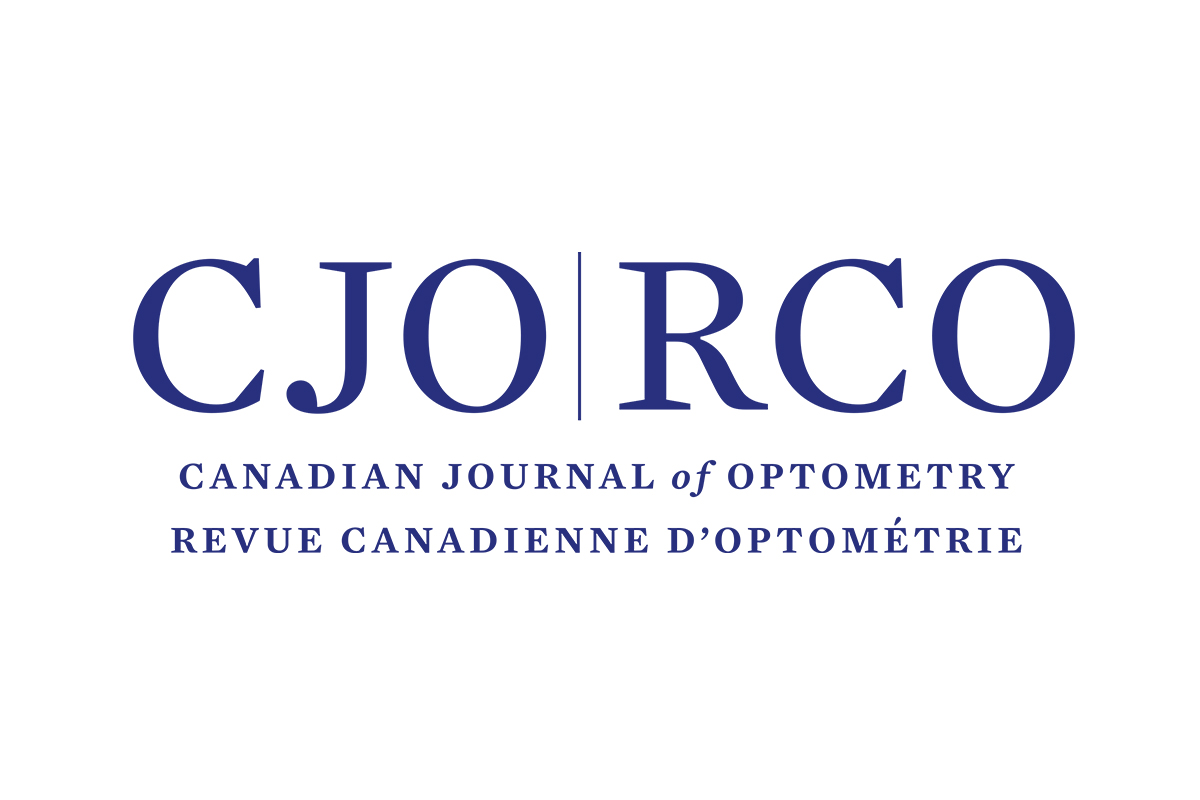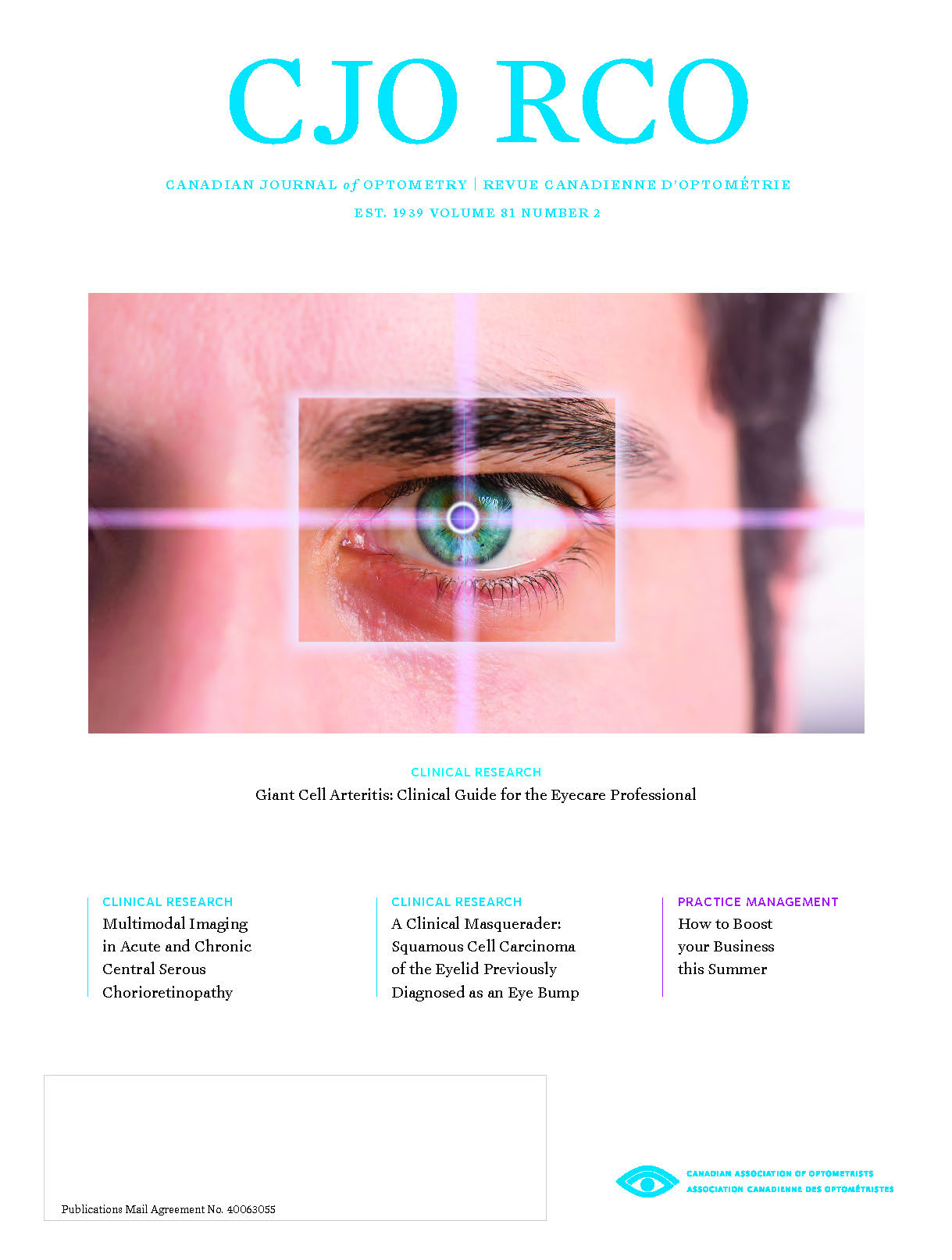Multimodal Imaging in Acute and Chronic Central Serous Chorioretinopathy
DOI :
https://doi.org/10.15353/cjo.v81i2.732Mots-clés :
Central serous retinopathy, central serous chorioretinopathy, CSR, CSCRRésumé
Numerous theories have been proposed regarding the pathophysiology of central serous chorioretinopathy (CSR) with no consensus on its exact etiology. Research has led to a variety of treatment possibilities which target specific mechanisms. Multimodal imaging, including fundus auto-fluorescence (FAF), optic coherence tomography (OCT), fluorescein angiography, and indocyanine green angiography identifies vascular and structural alterations which confirm the diagnosis of CSR and effectively tailors treatment and helps maximize visual prognosis in these patients. Imaging characteristics of CSR and case examples will be explored.
Publié-e
Comment citer
Numéro
Rubrique
Licence
© An Vo, OD, Jessica Haynes, OD, FAAO 2019

Cette œuvre est sous licence Creative Commons Attribution - Pas d'Utilisation Commerciale - Pas de Modification 4.0 International.


